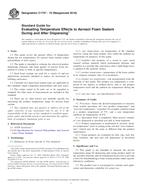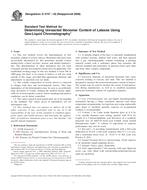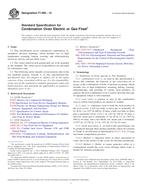1.1 This guide is intended to provide the chemical laboratory manager with guidelines for the disposal of small quantities of laboratory wastes safely and in an environmentally sound manner. This guide is applicable to laboratories that generate small quantities of chemical or toxic wastes. Generally, such tasks include, but are not limited to, analytical chemistry, process control, and research or life science laboratories. It would be impossible to address the disposal of all waste from all types of laboratories. This guide is intended to address the more common laboratory waste streams.
1.2 This guide is intended to support compliance with environmental laws in the United States of America. Some of these laws provide for states to take over regulation of air quality or natural water quality with the approval of the Environmental Protection Agency (EPA). Other matters, such as laboratory waste tracking, disposal as household garbage and use of sewers, are handled at the state, local or provider level throughout the country. Examples of providers are air scrubber services, municipal sewer systems, municipal and private garbage services, and treatment, storage or disposal facilities (TSD). Go to the EPA home page, click Wastes > Regions/States/Tribes > States to get help locating state regulations. Unfortunately, it is not possible for any one source to provide all the information necessary for laboratories to comply with all regulations. To ensure compliance, the laboratory manager must communicate with regulators at all four levels.
1.3 Though it would be convenient to cite each reference by its Universal Resource Locator (URL), this guide eschews that (because such references are too labile) with the exception of http://www.epa.gov and http://es.epa.gov for the United States Environmental Protection Agency, http://www.dot.gov or http://www.hazmat.dot.gov for the United States Department of Transportation, and http://thomas.loc.gov to follow pending federal legislation in the United States. Intra-site links suggested here are also subject to obsolescence. However, one can enter in the web site search box the title of the document cited to locate it.
This standard does not purport to address all of the safety concerns, if any, associated with its use. It is the responsibility of the user of this standard to establish appropriate safety and health practices and determine the applicability of regulatory limitations prior to use.
Product Details
- Published:
- 11/15/2006
- Number of Pages:
- 8
- File Size:
- 1 file , 110 KB
- Redline File Size:
- 2 files , 200 KB


